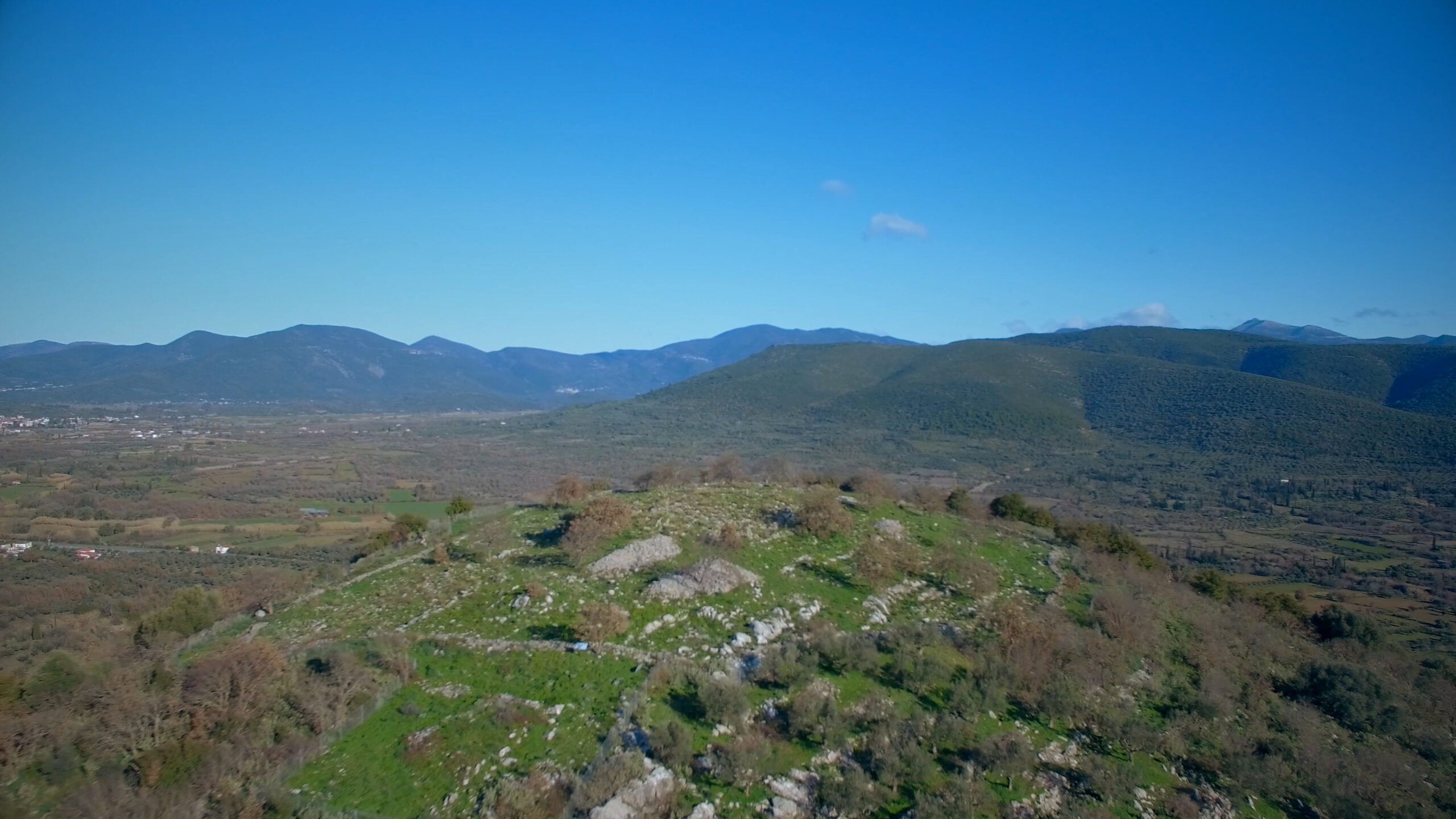The acropolis of Malthi is surrounded by a fortified enclosure with a total extension of 410 metres, with the latest research showing that the fortification of the settlement was constructed in the Early Mycenaean period. The northern side is preserved in a greater thickness and there one of the main gates of the settlement is opened. The western side of the wall has a strong foundation as it is situated on the natural rock, but the wall has given way in several places and has been destroyed. The eastern side seems to have had a suitable defensive configuration in antiquity, probably documenting that enemy attacks were made from there.
In the period before the fortification the settlement was scattered and unfortified and the houses had curvilinear plans, whereas in the post-construction period the houses are observed to have straight-sided plans and many buildings are constructed on the inner side of the fortification enclosure, using it as one of their walls. Near the northern part of the wall there are traces of a small spring, which is why archaeologists have assumed that this is where the earliest houses of the citadel were located.
